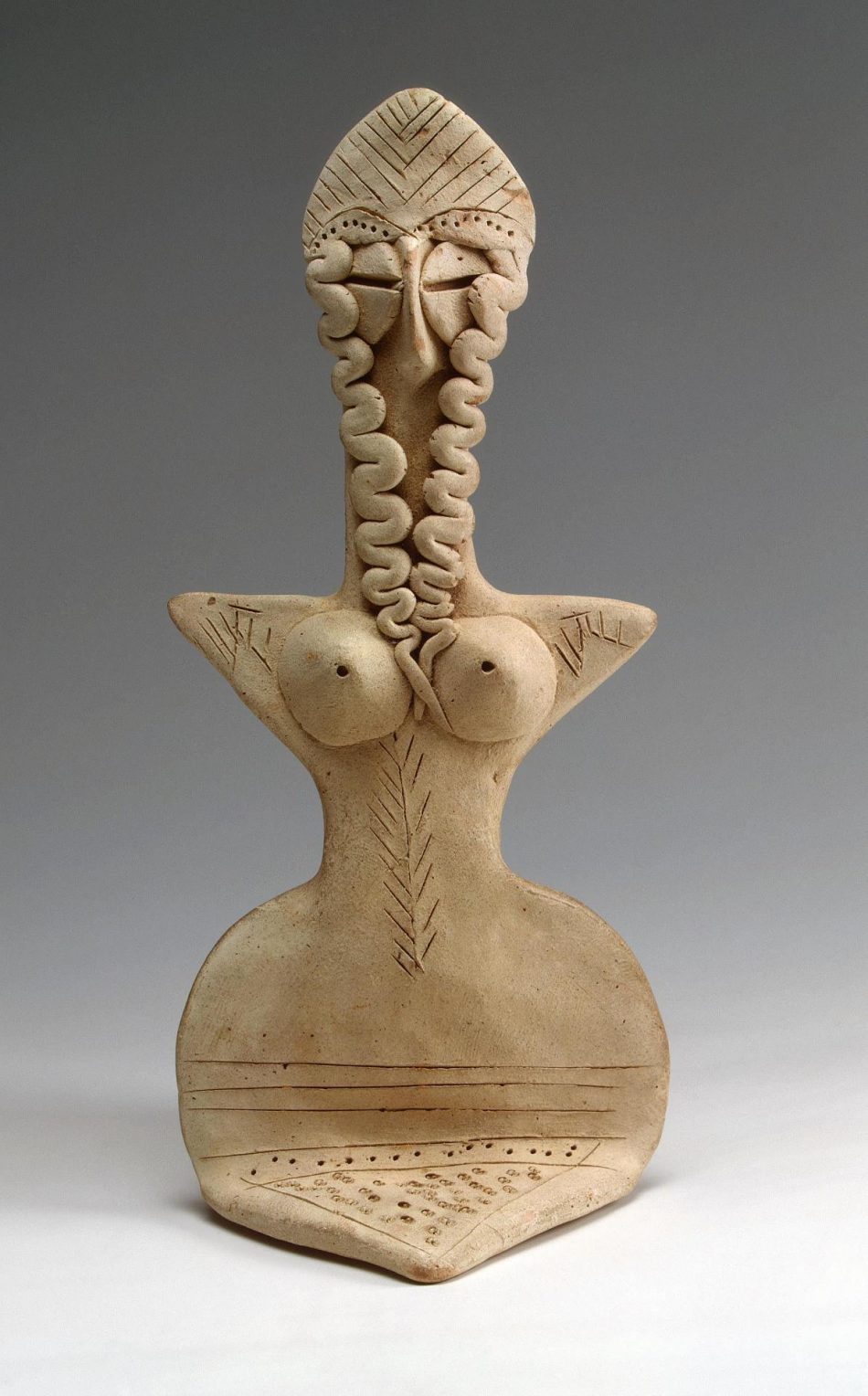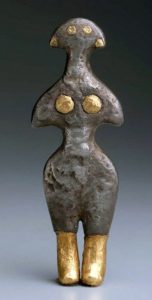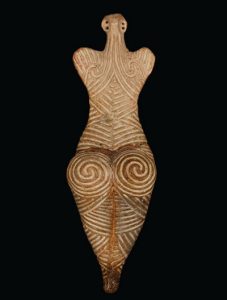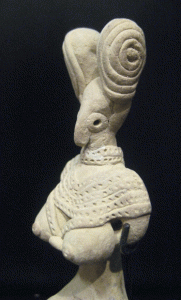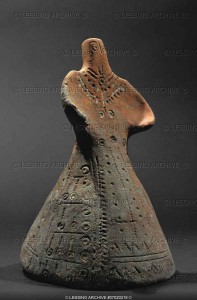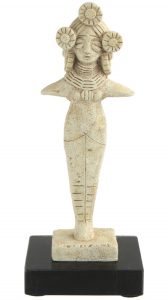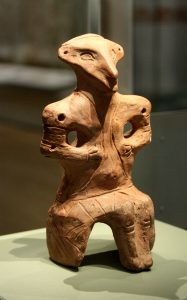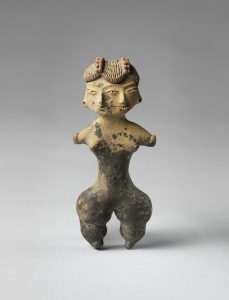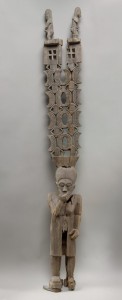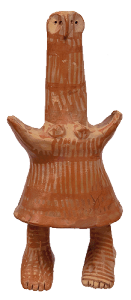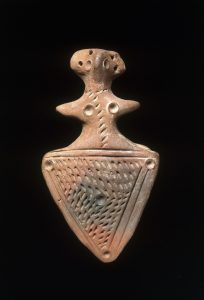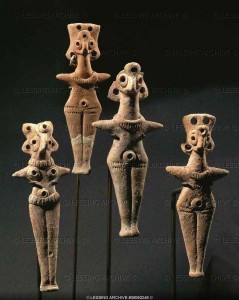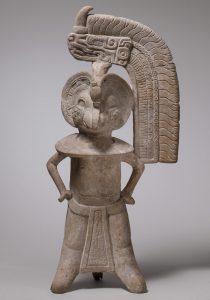Votive figure from Altyn-Depe (the Golden Hill), Turkmenistan. © State Hermitage Museum.
Clay; modelled. 16.5 × 7 cm
Namazga (V). 2nd millennium BC
Excavations by V.M. Masson, 1971, Southern Turkmenia, Altyn-Depe Settlement.
Entered the Hermitage in 2004; handed over by the Kara-Kum Expedition of the Leningrad branch of the USSR Academy of Sciences Institute of Archaeology. Inventory Nº 2851-62.
Wikipedia says:
Altyndepe (Алтын-Депе, the Turkmen for “Golden Hill”) is a Bronze Age (BMAC) site in Turkmenistan, near Aşgabat, inhabited in the 3rd to 2nd millennia BC, abandoned around 1600 BC.
Iranica Online says:
The culture of Altin Tepe during the developed Bronze Age is characterized by artistic pottery, stone vessels, hafted bronze and copper daggers with flat blades, tabbed silver and bronze seals showing cross-shaped figures and animals (goats, eagles, panthers, a three-headed dragon). The female terracotta statuettes are shaped in a conventionalized, flat style with long, plaited hair; some of them bear scratched signs which can be classified in groups and may possibly be symbols of various female deities. During the excavation of the “quarter of the nobility” a seal was found with two signs of proto-Indian lettering. It is not impossible that the culture of Altin Tepe may have belonged to a population using a language of the proto-Dravidian type.
It’s known locally as the “Turkmen Stonehenge”.
Similar things from elsewhere:

